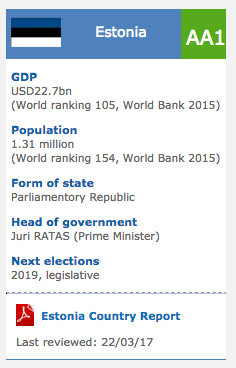Construction / Infrastructure in Germany
-
GERMANY, 2015/11/28
Introduction
German construction sector: Boom years are over, confidence falling despite stable profitability and slight growth in gross production in 2015 - up 2%
Public housing puts brake on stronger growth in the sector, private housing growing steadily – gap continues to widen
Insolvencies in sector expected to fall by 3% in 2015; but construction sector still has second highest number of insolvencies nationally
Property prices are a risk factor: purchasing power unable to keep pace with sharply rising prices.
Text of the news
The spirit of optimism that prevailed in Germany’s construction sector in recent years has largely disappeared and confidence in the sector is falling, according to Euler Hermes' study on the industry. During the boom from 2010 onward, German construction companies fared relatively well, particularly compared to their ailing European neighbors. Nevertheless, they had to lower their sights slightly in 2015, with growth in gross production at 2% vs 3% in 2014 and 5% on average between 2010 and 2013. The profitability of German construction firms remains stable however, and leverage is low. Insolvencies are expected to be slightly down in 2015.
Nearly 17% of all bankruptcies in Germany occur in the construction sector – the second highest figure
"After wholesale and retail, the construction sector suffers the highest number of insolvencies in Germany; nearly 17% of all bankruptcies happen to construction companies," said Ludovic Subran, chief economist at Euler Hermes Group. "In 2015, we expect the number of cases to fall by around 3% to approximately 3,900 insolvencies (2014: almost 4,000). This is good news, even though the level is still relatively high overall. German construction companies are faring better than their European counterparts however. In France we estimate that around a quarter of all corporate insolvencies are in the construction sector."
Public housing putting brake on sector, much stronger growth in private sector
The main drivers behind the relatively good position of Germany’s construction sector compared to the rest of Europe are private housing and robust demand in the property market. Euler Hermes' economists expect this trend to continue.
"The brake on growth in the construction industry is clearly public housing," explained Thomas Krings, chief risk officer at Euler Hermes Germany. "Development is lagging way behind the private sector due to half-hearted infrastructure programs. For 2015, we anticipate 1% growth against 3% in private housing, which is increasingly the industry’s driving force. In 2010, both sectors were still on a par in terms of their order books – now there is a 60 percentage point gap between them, a trend which is being intensified by demographic developments. Urban growth is increasing: almost 10% in recent years. Net migration is also rising by around 13% per year based on current expectations or even more, given the current refugee figures. The knock-on effect of this will be an increase in demand for housing.”
Widening gap between growth of disposable net incomes and that of property prices
In addition to the wide gap between private and public housing, the unequal growth of sharply rising property prices and disposable net incomes is another risk factor for the future development of the sector. Euler Hermes believes this imbalance is set to continue in 2015 and 2016.
"Between 2007 and 2014, property prices rose by nearly 5% a year," said Krings. "Admittedly we expect this to flatten out to around 4% over the next year, but with purchasing power up only 1.8% on average in 2015-2016, it has no chance of keeping pace. This is a risk factor for the sector, and we will keep a close eye on it, along with future interest rate movements and public investment."








